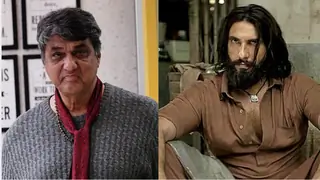Thank you very much Idunno for making it simpler for me to understand, i knew a fair bit about about caste but didn't know there were four classes 👏👏👏 sweet of you to break it down
Read the chapter again and makes more sense, thanks to you i've also read about 'untouchables in india' and found it quite 😕 i don't know how to express it really but it was an eye opener and i would have never known had it not been for this os.
Just a question, i came across this in Wikipedia (i know not the most reliable of sites but easy😳)
'included foreigners, nomadic tribes, law-breakers and criminals and those suffering from a contagious disease' so according to this would their progeny as in their children be also affected by this 'untouchability' thing in the future. I don't think above peoples are called untouchables read following detail description of jati, varna and cast system.,
Caste, varna and jti
NOTES-The caste system in India is a system of social stratification{Social stratification is a society's categorization of people into socio economic strata, based upon their occupation and income, wealth and social status, or derived power (social and political).}In modern Western societies, social stratification typically is distinguished as three social classes: (i) the upper class, (ii) the middle class, and (iii) the lower class.
It consists of two different concepts, varna and jti, Varna may be translated as "class," and refers to the four social classes which existed in theVedic society, namely Brahmins, Kshatriyas, Vaishyas and Shudras
Certain groups, now known as Dalits, were historically excluded from the varna system altogether, and are still ostracised as untouchables.[ Jti may be translated as caste, and refers to birth. The jtis are often thought of as belonging to one of the four varnas. Jti, meaning birth, There are four varna but thousands of jtis. Some scholars of caste have considered jti to have its basis in religion, assuming that in India the sacred elements of life envelope the secular aspects; ritual rankings that exist within the jti system as being based on the concepts of religious purity and pollution, jti to be occupational segregation, feature of jtis has been, that "both in the past and for many though not all Indians in more modern times, those born into a given caste would normally expect to find marriage partner" within his or her jat, the marriage regulations and rules were required. Though caste is considered as dominant feature of Hinduism, in Indian context, it has influenced other religions too like Christianity, Islam, Judaism and Sikhism in the Indian subcontinent. Individual castes lived together, the dominant caste living in the centre and other castes living on the periphery.[38] Restrictions on the use of water well or street by one caste on another, such as an upper caste Brahmin was not permitted to use a street by a lower caste group, while a caste considered impure was not permitted to draw water from a well-used by members of other castes.
Caste members restricted their own members from taking up certain profession they considered degrading. all four castes (Brahmins, Ksatriyas, Vaisyas and Sudras) did agriculture labor or became warriors in large numbers.
Dalit, meaning "oppressed" who were formerly considered "untouchable" Dalits were excluded from the four-fold Varna system and they formed the unmentioned fifth varna, also called Panchama.[ Scheduled Castes (SC) is the legal name for those who were formerly considered "untouchable", the term Dalit also encompasses Scheduled Tribes (ST) and other historically disadvantaged communities who were traditionally excluded from the society.[
In the Hindu caste system, Dalit status is associated with occupations regarded as ritually impure, such as leatherwork or butchering, or removal of rubbish, animal carcasses and human waste. Dalits work as manual labourers cleaning streets, latrines and sewers.[33]These activities were considered to be polluting to the individual and this pollution was considered contagious.
Dalit were commonly banned from full participation in Indian social life. They were physically segregated from the surrounding community. For example, they could not enter a temple or a school and were required to stay outside villages. Other castes took elaborate precautions to prevent incidental contact with Dalits. Dalit youths and teenage girls (after rape) have been burnt alive by upper caste goons in many different incidents.Other atrocities included forced labour, denial of access to water and other public amenities and sexual abuse. Untouchability was born about 400 AD, due to the struggle for supremacy betweenBuddhism and Brahmanism
In short
| There are 165 million Dalits in India-about 1/6th of the total population. - Dalit means "broken people."
- Dalits were formerly known as "untouchables."
- Dalits live at the bottom of India's rigid social order known as the caste system.
- The caste system originated around 7 A.D.
- Caste is determined by birth, not race.
- Caste is based upon the Hindu belief that a person's position in life is based upon the good deeds and sins of their past life.
- Caste determines Indians' spouses, friends, occupations and residence.
There are four major castes, and hundreds of minor castes. Each caste has specific duties and privileges. - Brahmins-originally the priests and intellectuals.
- Kshatriyas-soldiers.
- Vaishyas-traders.
- Sudras-performed menial tasks.
- . A fifth group was created to perform tasks considered too menial or degrading to be performed by caste members.
- Dalits are so low in the social hierarchy that they are outside of the caste system and considered "outcastes."
- Dalits are the manual scavengers, the removers of human waste and dead animals, leather workers, street sweepers and cobblers.
- The mere touch of a Dalit was considered "polluting" to a caste member. Thus, the concept of "untouchability" was born.
- The preamble to the Indian Constitution proclaims the goals of social justice and equality.
- Article 14 sets forth the principal of equality and prohibits discrimination in employment and education.
- The Constitution does not set forth a casteless society as a national goal.
- No law has been passed abolishing untouchability.
- The practice of untouchability is a punishable offense, but the law is rarely enforced.
- The Civil Rights Act of 1955, and the Scheduled Castes and Tribes Act of 1989.
- The National commission of Scheduled Castes and Scheduled Tribes was formed to protect Dalit interests and integrate them into society.
- All programs have failed to produce substantive change.
What does it mean to be a Dalit in India today? - Dalits endure segregation in housing, schools and access to public services.
- Dalits are denied access to land, forced to work in degrading conditions and are routinely abused by the police and upper-caste members.
- Dalits suffer discrimination in education, health care, housing, property, freedom of religion, free choice of employment, and equal treatment before the law
- Dalits suffer routine violations of their right to life and security of person through state-sponsored or sanctioned acts of violence, including torture.
- Dalits suffer caste-motivated killings, rapes and other abuses on a daily basis.
- Between 2001-2002 there were 58,000 registered egregious abuses against Dalits and Tribals.
- 2005 government report stated there is a crime committed against a Dalit every 20 minutes.
- Dalits comprise most of the agricultural, bonded and child laborers in the country.
- 2007 government report found 77% of all Indians live on less than $.50 a day and most of them were Dalits.
- Dalit women face additional discrimination and abuse, including sexual abuse by the police and upper caste men, forced prostitution, and discrimination in employment and wages.
- Dalit children face continuous hurdles in education. They are made to sit in the back of classrooms and endure verbal and physical harassment from teachers and other students. The effect of such abuses is confirmed by the low literacy and high drop-out rates for Dalits.
|
As far as your story goes, Geet isn't a untouchable but her carer is so logically it shouldn't affect her right? Sorry very knew to this so I'm keen to know.
but like i mentioned before i love Maan for overlooking such stuff,
love for him is simply love 👏👏👏
































